





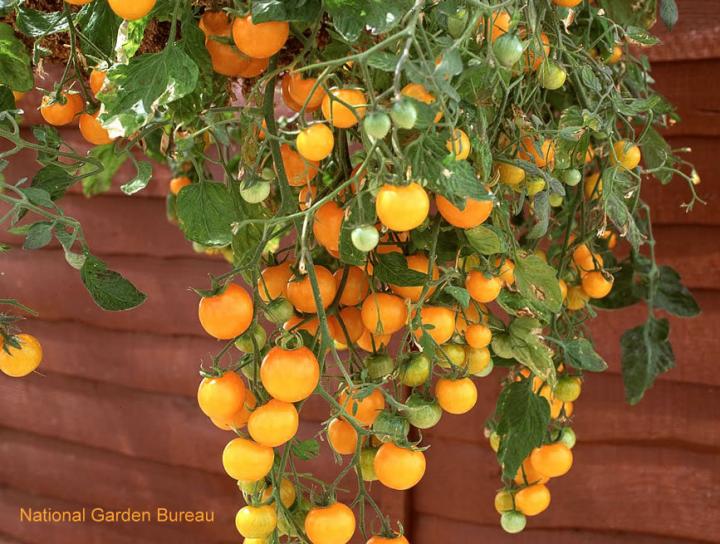 Photo by the National Garden Bureau
Photo by the National Garden Bureau
Want to have more control over growing conditions and enjoy higher yields with a lot less work? Garden in containers. Container gardening is an easy way to garden, especially when you lack yard space.
Large plants need lots of space, and most roots need room to grow. Avoid small containers as they often can’t store enough water to get through hot days.
Also, the bigger your container, the more plants you can grow in it!
Use barrels (a wooden half-barrel can yield an amazing amount of food), buckets, baskets, boxes, bath- and other tubs, and troughs—anything that holds soil. Just be sure that it has drainage holes in the bottom.
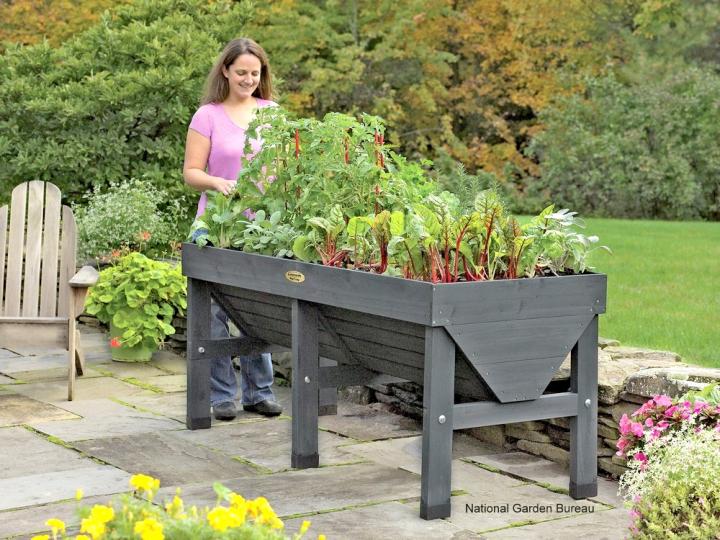
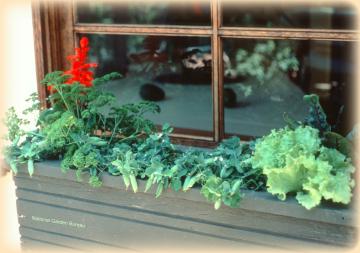
A large window box can provide the makings for a handy salad within arm’s reach! Whatever the size or type, place your containers where they are most convenient to be cared for and will grow best. Most vegetables need 6 to 8 hours of direct sun in order to thrive and produce well.
Plants in containers need the best possible soil, aeration, and drainage for healthy root growth and optimum harvest. Do not use soil from the garden: It is too heavy, can become waterlogged, and brings disease and insects with it. Choose instead a soilless mix (quick-draining and lightweight) or use compost, alone or combined with a soilless mix.
To keep plants growing, feed them liquid seaweed, fish emulsion, or manure tea weekly. To ensure growth, vegetables need consistently moist soil.
Attractive in window boxes, edible flowers such as nasturtiums, calendula, and signet marigolds also add color to the plate!
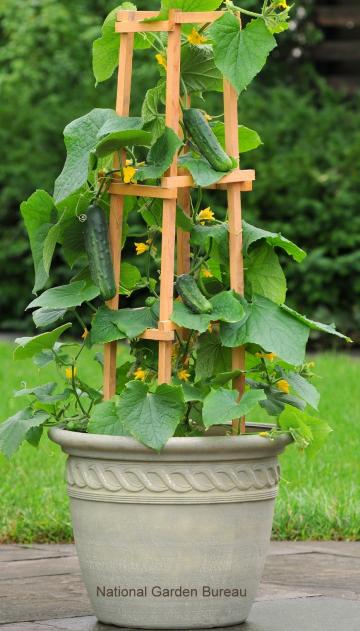 Support your climbing vegetables with trellises, stakes, netting, twine, or cages.
Support your climbing vegetables with trellises, stakes, netting, twine, or cages.
A teepee of bamboo stakes will hold pole beans or snap peas. Cucumbers trained to climb up a nylon mesh fence will develop fruit that hang down and grow straight. To avoid damaging the plants or their roots, put supports in place at planting time.
To maximize space and thus your harvest, plant root crops, low-growers, and tall climbers together in the same container. The climbers will eagerly scramble up a trellis, while the small plants spread around their base. You’ll hardly need to weed because there won’t be any room for weeds to gain a foothold, and during the height of summer, some low-growers (leafy greens, for example) will thrive in the shade provided by the taller plants.
Mix quick-maturing plants, such as lettuce or radishes, with longer-growing ones, like tomatoes or broccoli.
Group plants with similar needs for sun and water, such as pole beans, radishes, and lettuce; cucumber, bush beans, and beets; tomatoes, basil, and onions; and peas and carrots.
Read seed catalogs. Many list varieties of vegetables bred specifically for growing in containers.
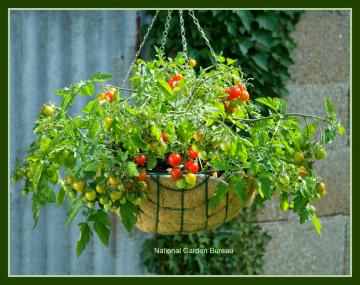 Here are our recommendations on which vegetable varieties are container-friendly—and which container types are most suitable for each veggie.
Here are our recommendations on which vegetable varieties are container-friendly—and which container types are most suitable for each veggie.
For supplies, you only need a good container, the right soil mix, and appropriate seed (or transplant) varieties. In addition to providing 5 hours or more of full sun, watering is critical. As mentioned above, you may need to water daily or twice daily; in hot weather the soil can dry out quickly. The good news: less weeding! Containers are generally low-maintenance.
Beans, snap
Container: 5-gallon window box
Varieties: Bush ‘Blue Lake’, Bush ‘Romano’, ‘Tender Crop’
Broccoli
Container: 1 plant/5 gallon pot, 3 plants/15-gallon tub
Varieties: ‘DeCicco’, ‘Green Comet’
Carrots
Container: 5-gallon window box at least 12 inches deep
Varieties: ‘Danvers Half Long’, ‘Short ‘n Sweet’, ‘Tiny Sweet’
Cucumbers
Container: 1 plant/1-gallon pot
Varieties: ‘Patio Pik’, ‘Pot Luck’, ‘Spacemaster’
Eggplant
Container: 5-gallon pot
Varieties: ‘Black Beauty’, ‘Ichiban’, ‘Slim Jim’
Lettuce
Container: 5-gallon window box
Varieties: ‘Ruby’, ‘Salad Bowl’
Onions
Container: 5-gallon window box
Varieties: ‘White Sweet Spanish’, ‘Yellow Sweet Spanish’
Peppers
Container: 1 plant/2-gallon pot, 5 plants/15-gallon tub
Varieties: ‘Cayenne’, ‘Long Red’, ‘Sweet Banana’, ‘Wonder’, ‘Yolo’
Radishes
Container: 5-gallon window box
Varieties: ‘Cherry Belle’, ‘Icicle’
Tomatoes
Container: Bushel basket
Varieties: ‘Early Girl’, ‘Patio’, ‘Small Fry’, ‘Sweet 100’, ‘Tiny Tim’
See our individual Vegetable Plant pages for advice on growing your most common vegetables.
For more advice, planting tables, and weather predictions, see more at Almanac.com.
Copyright © www.100flowers.win Botanic Garden All Rights Reserved